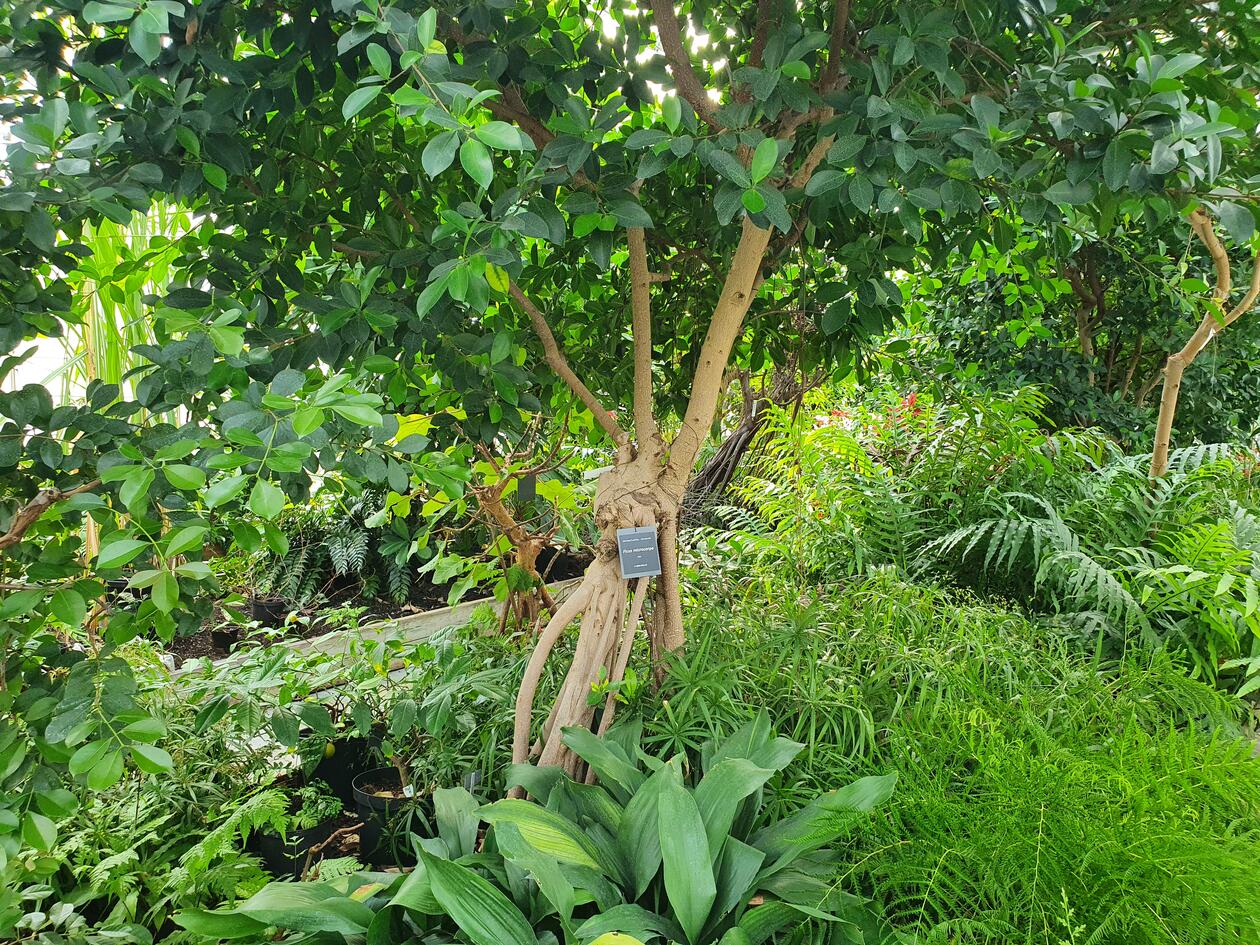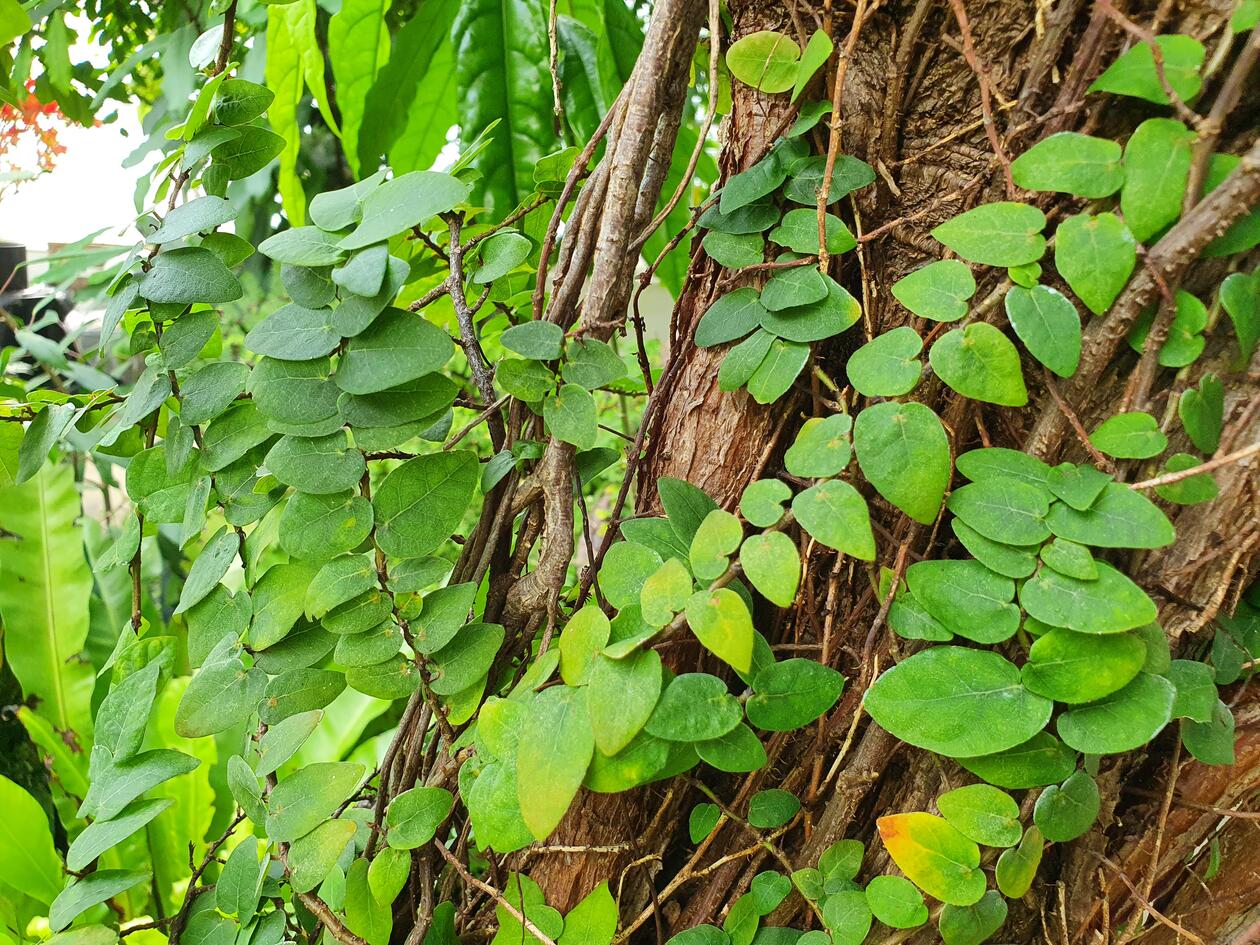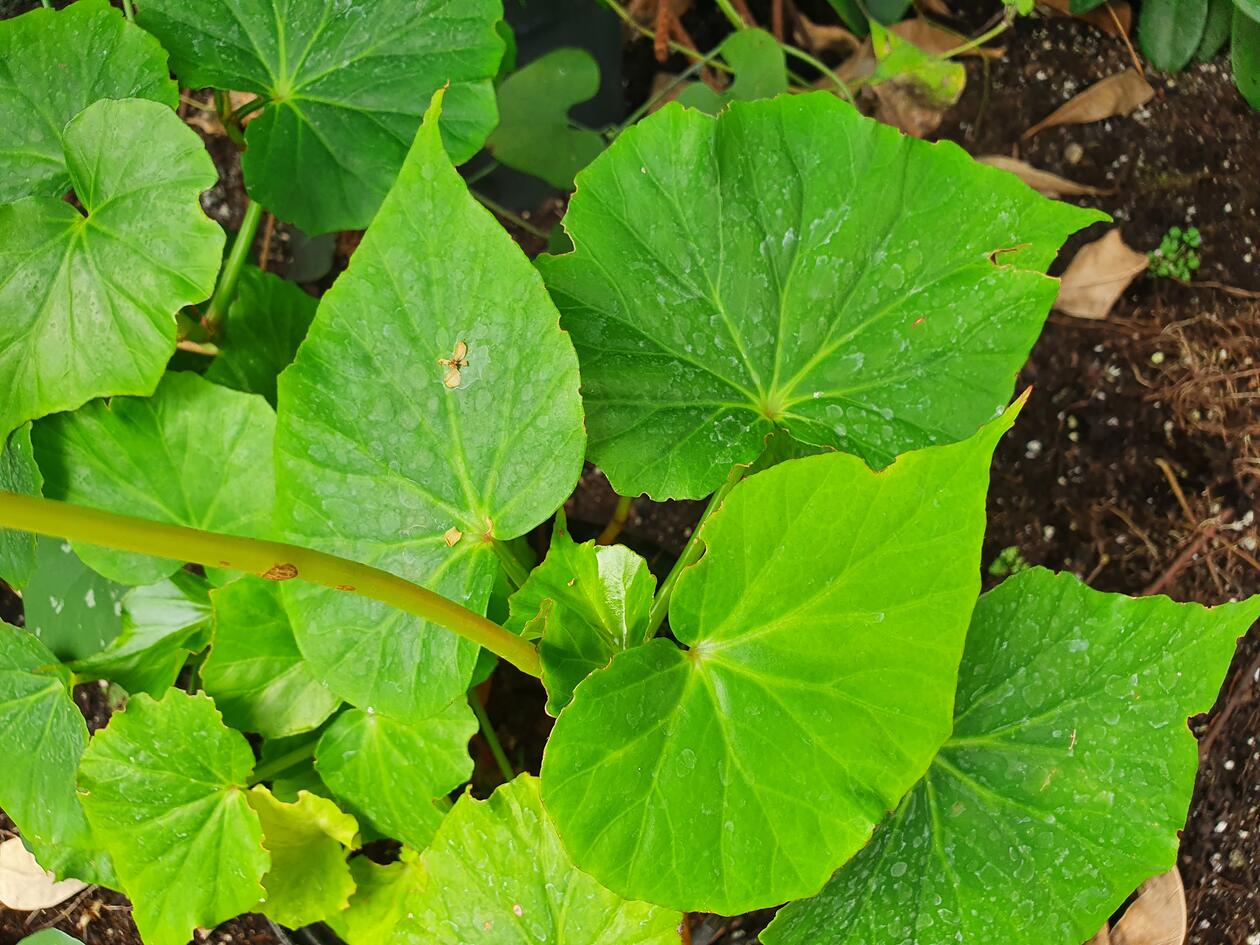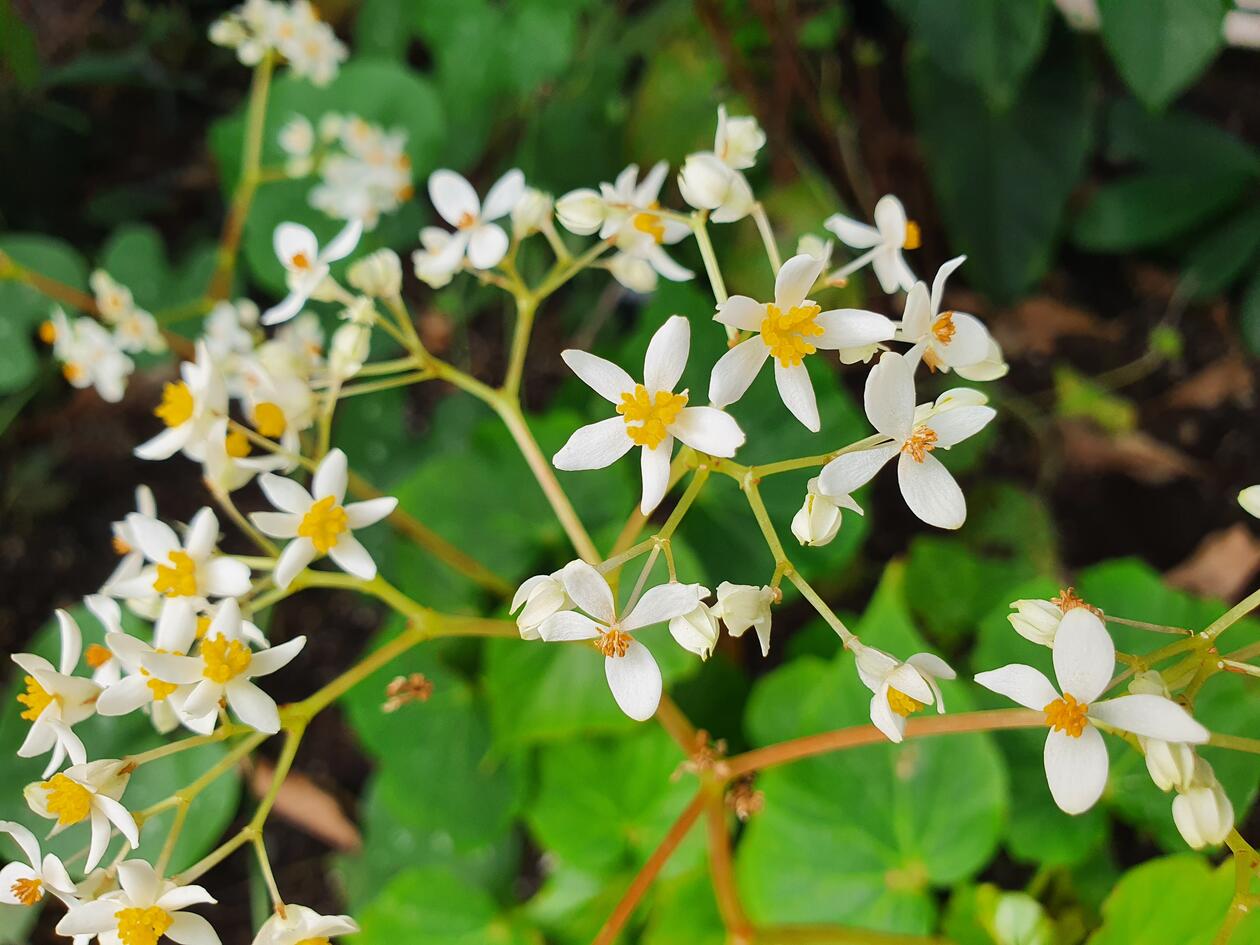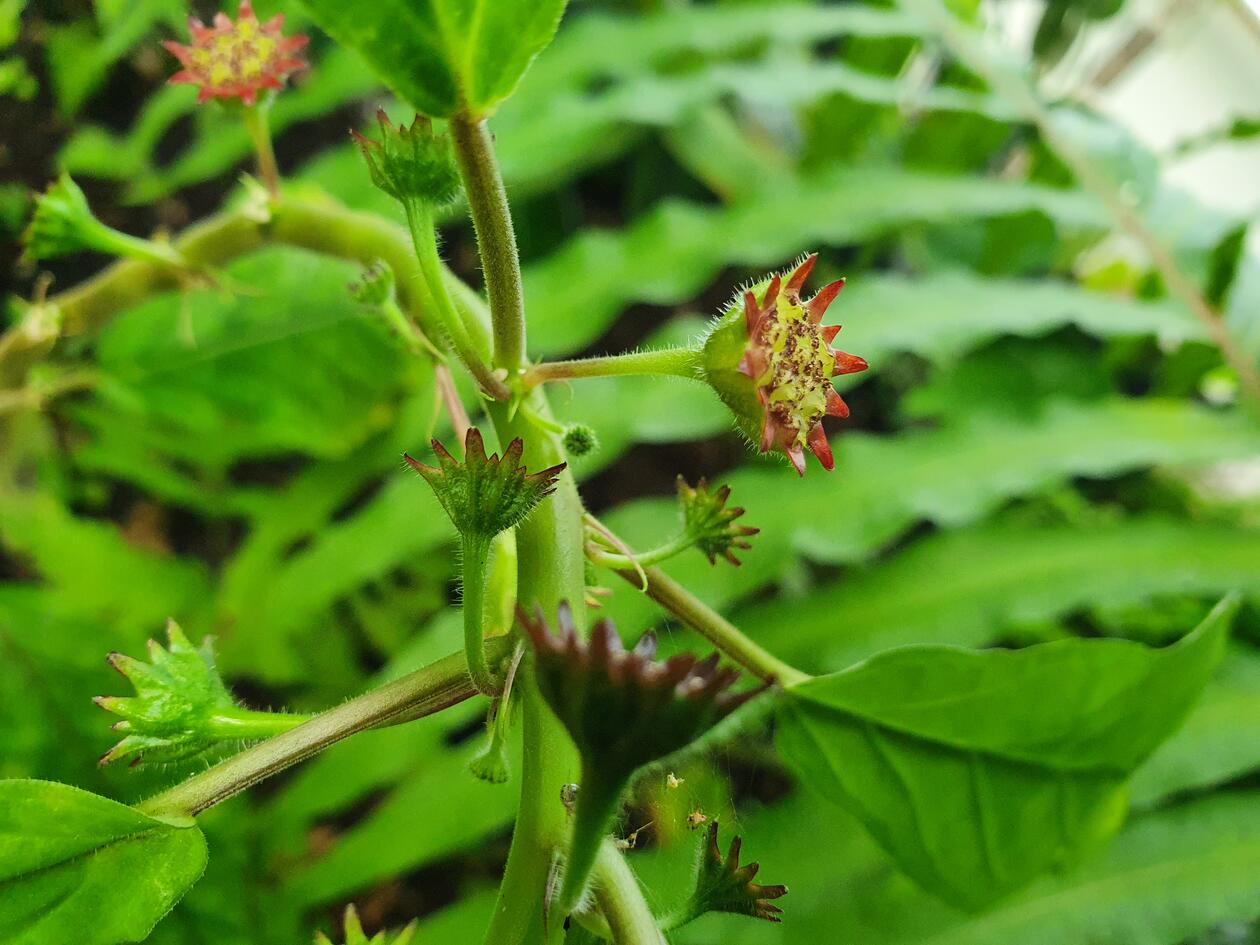The tropical glasshouse
The tropical glasshouse was originally established for the research collections of Prof. Cornelius C. Berg (1934-2012)

Main content
The University Gardens’ glasshouses at Milde
Glasshouses are essential for propagating and growing up our collections and for maintaining those that cannot survive outdoors. Our first glasshouse was established in 1980. Ten years later this was extended with two further glasshouses, supported by the Norwegian Research Council, the Meltzer Foundation, Bjarne Rieber and the Friends of the Arboretum. These were inaugurated on 24 May 1991 in time for the Arboretum's 20th anniversary.
Establishing a tropical glasshouse
It was a great day for Professor Cornelis C. Berg (1934 - 2012) when he established his research collection of tropical figs, genus Ficus, in the new glasshouses at Milde. Some of the plants came from the collection Berg had built up in Utrecht in the Netherlands, others from seed that he collected from around the world, and the most important have since been shared as cuttings with other botanic gardens. Our remaining specimens have been pruned and maintained for many years and now form the main ‘canopy’ in our glasshouse rainforest.
Maintaining tropical conditions in temperate western Norway
In different sections of the glasshouses the temperature is allowed to decrease to a greater or lesser extent during the winter, but the tropical section must be maintained at around 18° C all year round or the tropical plants will not survive. We use shade curtains, air vents in the ceiling, and electric heating to help regulate the temperature. The curtains work both to insulate against the cold in winter and also against the sun on hot days.
Tropical rain forests
The tropics are the most biodiverse regions of the world, and tropical rain forests include numerous plant genera and even families that cannot grow outside in Norway. Some may still be familiar as houseplants, well adapted to life in consistently warm but relatively dark conditions under the forest canopy or in your living room. Others may be familiar from the kitchen – but what do bananas, pineapples, sugar cane or ginger look like in real life? Have an explore and see what you can find…
Begoniaceae
All but one of the over 2,000 species of Begoniaceae belong to the pantropical genus Begonia. There are several examples in the glasshouse – look out for the characteristic asymmetric leaf bases and see if you can recognise the separate female and male flowers – unusually, they look rather different one from another, having different numbers of colourful tepals and the female flowers having a distinctive winged ovary.
Moraceae
The around 1,400 species of Moraceae are grouped into up to 40 genera, but one genus stands out for its diversity and abundance, particularly in the tropics: the over 700 species of Ficus, the figs. Which of the trees in our rain forest are figs – and can you spot the characteristic fruits, comprising a fleshy receptable enclosing and hiding the tiny flowers? Look out for another genus too, a more diminutive example of Dorstenia: their inflorescences are open instead of closed.
Araceae
You might recognise the ‘Swiss cheese plant’ Monstera deliciosa or the ‘peace lily’ Spathiphyllum cochlearispathum from your local florist, but the around 3,700 species of the Araceae family encompasses numerous genera and a range of growth forms from tiny water plants through to giant herbs and climbers. Their bizarre inflorescences comprise many reduced flowers arranged on a ‘spadix’ surrounded by a ‘spathe’. These may attract flies by pretending to smell of rotten meat. Sniff with care!
